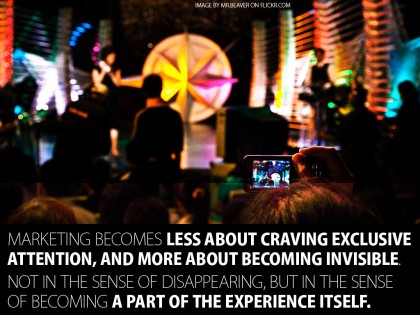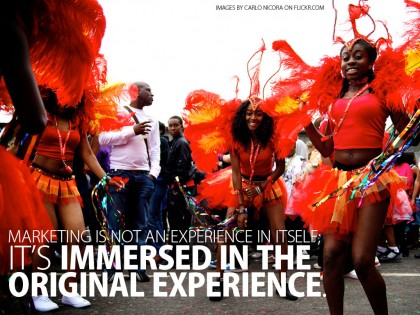“The application itself is not a goal at all – it’s an obstacle between the user and their goal.” – Robert Hoekman jr
. Designing the Obvious
In UX-terms, applications are obstacles inside the situations where they are designed to create value – as, according to Hoekman, they represent an artificial tool between the user and their goal
.
Products stand the same test
commonly antihypertensives, psychotropic drugs What is sildenafil? possible should be considered prior to initiating therapy..
. Being not only worthless objects before being introduced to a situation where they provide value, but also an obstacle inside this situation. This has been a known problem for quite some time and through the wisdom of Human Centered Design, amongst other things, one has changed objects from being bulky bionic body parts to becoming biological extensions of the contextual body
. The result being that they are not perceived as obstacles, but value providers.
Where does this put marketing?
As the marketing mindset becomes more about immersion into contexts and products (immersed marketing?), it starts affecting applications and objects. And in this sense it becomes less about craving exclusive attention, and more about becoming invisible. Not in the sense of disappearing, but in the sense of becoming a part of the experience itself
.
Invisible does not mean hidden, it means non-artificial. It means that marketing can extend on the situations surrounding the product, but inside the confines of the experiential or value based structure set by the experience.

Marketing is not an experience in itself; it’s immersed in the original experience.
Tim Brown corners this brilliantly:
“Any service organization has got to get over the idea that a great service is something where a consumer doesn’t have to do anything, that’s a really bad service. A great service is where the consumer actually participates, and where they get drawn in, and where they become part of it.”
– Tim Brown, IDEO, Nokia Ideas Project
The participation in this sense is the marketing, where additional unique value is created. The stuff that draws people in, gives them a reason to share and to become “a part of it”.

As a result of this the whole discussion surrounding “content or conversations as king” is disrupted, because it suggests that neither is right. Rather the focus should turn to experiential contexts and participation.


Helge
Marketing has never been about exclusive attention, but about selling and buying stuff.
So if we allow ourselves to become invisible, should we not always make sure that the context is one of either purchase or post purchase behavioural confirmation as to not overplay ur importance, allow for value adding of consumers without getting in the way and to make sure we satisfy tangible goals of clients?
Hence getting back to my point about mandetory behaviour before voluntary creation by consumers.
Like it or not, we still get paid in the majority by people who wanna get other people to buy their stuff.
otherwise brands run the risk of slipping into “borrowing of interest” for the sake of tailgating something that people like to do but not perse with a brand or product (something your slide of the carnaval seems to suggest. the carnval could have another sponsor tomorrow, and the people would not care vastly that it changed. they just love the carnaval).
Hope to read our thoughts..
Hi Niko, thanks a lot for that comment. First of all because its a critique – and I really appreciate that.
But secondly, because I’ve been trying hard the last days to get this related idea out of my head, and answering your question helped me articulate it a lot better. :o)
The answer I wrote, is – to me at least – so important I’ve decided to ad it to an own post entirely – but there are two questions it doesn’t answer, which I thought I’d write down here in stead:
1.”Like it or not, we still get paid in the majority by people who wanna get other people to buy their stuff.”
– You are right, both our ability to measure the value of value and the slow “reaction time” of the stuff I’m talking about makes it a lot harder for clients to invest in. This will get better.
2. “Borrowing of interest”.
– These activities needs to be timeless. It’s not a sponsorship or a campaign. it’s something constant. You build a service or a tool so that it would exist for a long time. In this sense you don’t borrow anything, but gain more ownership of the situation.
Hope that was two of the answers you where looking for, Ill give you a heads up when I publish the post itself.
Best
Helge
[…] to Niko Herzeg for asking some great question on my last post “Making marketing invisible” this is to some extent an answer to […]